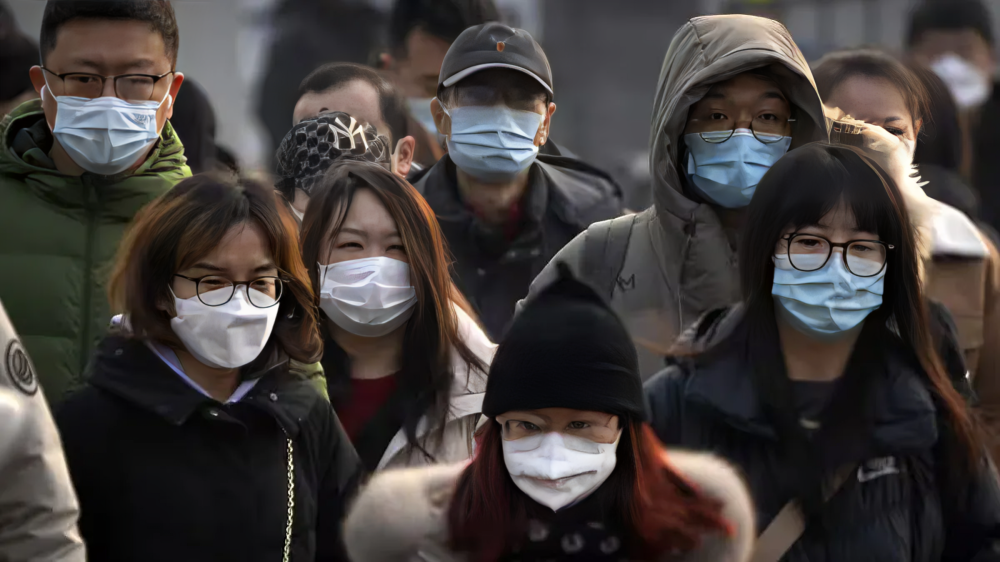
Chikungunya is hitting all the headlines across China. Within just a few weeks, over 7,000 people have been infected in the province of Guangdong, with most of the cases being reported in the bustling city of Foshan. The sudden spate has awakened the interest of the public, not because of the numbers alone, but because it has resulted in health measures that remind many of the early days of COVID-19. So, what exactly is chikungunya?
Table of Content:-
How serious is it, and what are the measures being taken to prevent it? Read ahead to know how much time it takes to recover from the same, what the experts are stating and what China is doing to safeguard its citizens.
What is Chikungunya and Why Is It a Threat?![]()
Chikungunya is a virus transmitted to humans through infected mosquito bites, particularly the Aedes species, which also transmit dengue and Zika. It's not transmitted from person to person. Its primary symptoms are:
- Sudden fever
- Severe joint pain (most often in hands and feet)
- Headache
- Muscle pain
- Rash
Although chikungunya is not usually fatal, it can be debilitatingly painful. Most individuals improve after 1–2 weeks, but others experience joint pain for weeks, months, or even years. Previously, China had experienced only a few dozen imported cases, so this outbreak, the largest since the first local detection in 2008, is particularly concerning. Experts think warmer, more humid weather is allowing mosquitoes to breed quicker and for such outbreaks to occur.
Why the Outbreak Is a Big Deal Now
- More than 7,000 cases have been reported in Guangdong province since June 2025, and almost 3,000 new cases in a single week.
- Dozens of cities are involved, most of the cases being in Foshan City.
- Hong Kong has had its first imported case, a boy who went to Foshan.
- Officials report that all cases reported have been mild, but the scope of response is unprecedented in China for this disease.
- World health organisations, such as the CDC, have given travel warnings for Guangdong.
Recovery Time From Chikungunya![]()
Dr Bhumesh Tyagi, Associate Professor of General Medicine at Sharda Hospital, shared the most-asked answer, How long does recovery from chikungunya take?
- Most people recover in 1 to 2 weeks, according to Dr. Tyagi.
- But lingering problems, particularly joint pain, may take longer. In a few, pain will last weeks or even months after other symptoms subside.
- Some patients fully recover with no residual symptoms.
- "Yes, with time, these issues resolve on their own for most, but some people need extra care for nagging joint pain," says Dr. Tyagi.
China's Response: Covid-Era Measures Return
- The outbreak has seen a health response that resembles the early stages of COVID, despite the fact that chikungunya is not transmissible between humans.
- Every patient diagnosed with the disease in cities such as Foshan needs to be hospitalised under bed nets until they test negative or undergo a week's stay.
- Pharmacies are now monitoring everyone who purchases medication for fever or arthritis, in order to identify potential cases on the lookout.
- Home inspections are conducted to eliminate standing water sources, where mosquitoes reproduce; non-compliant homes are fined or even subject to legal penalties.
- Drone and masked staff fog city streets and parks with insecticide.
- Citizens are issued mosquito repellent and are advised on how to avoid bites.
Key Steps for Public Safety
- Be health conscious if coming from outbreak areas.
- Utilize repellents and mosquito nets, particularly in endemic areas.
- Drain standing water from the home and surroundings.
- Adhere to health warnings issued by local authorities.
- Report early for treatment if you experience symptoms.
ALSO READ: Former J&K Governor Satyapal Malik Dies at 78 After Battling UTI and Kidney Disease - Report
Conclusion
China's chikungunya outbreak is severe, but not panic-inducing. With intensive mosquito suppression, hospital isolation, and cooperation from the public, it can be controlled. The virus differs from COVID-19: it's not transmissible between humans, and a majority of patients fully recover. Nevertheless, the resonance of pandemic-type measures indicates just how seriously health officials are treating new outbreaks in a post-COVID world. Vigilance now will stave off bigger issues later.
Also watch this video
How we keep this article up to date:
We work with experts and keep a close eye on the latest in health and wellness. Whenever there is a new research or helpful information, we update our articles with accurate and useful advice.
Current Version
Aug 06, 2025 09:34 IST
Published By : Chanchal Sengar
.jpg)
-1753268160163.webp)
